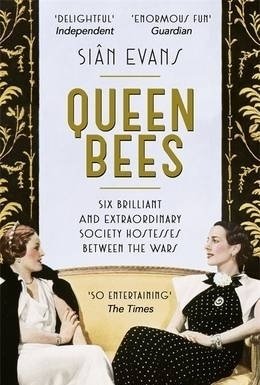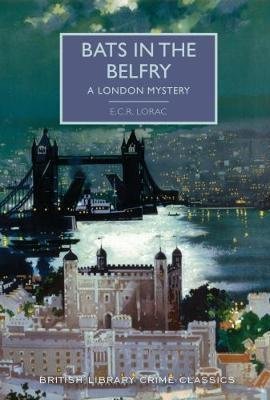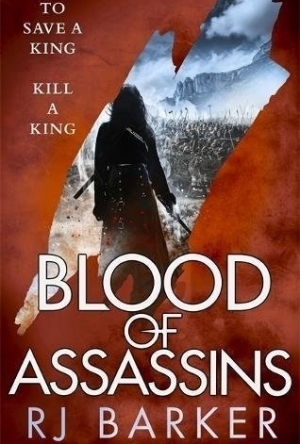
Portuguese Video Dictionary - Learn and Speak with Video Phrasebook
Travel and Reference
App
Do you ever wish when traveling that you could have someone who could teach you their local language...

Dutch Video Dictionary - Translate, Learn and Speak with Video Phrasebook
Travel and Reference
App
Do you ever wish when traveling that you could have someone who could teach you their local language...

PROMT Translator Spanish-English offline
Travel and Reference
App
- Quick and high-quality translation without the internet - New “Dialog” mode for easy...

ELSA Speak - Accent Reduction
Education and Games
App
Learn to speak English doesn’t have to be scary and lonely anymore. With ELSA - your English...

Dic-Dic. Dictado multilingüe para la práctica de la escritura y de la correspondencia entre sonido y grafía
Education and Games
App
***App featured and recommended by Apple in the App Store Kids section in more than 20 countries*** ...

Offline Mongolian to English Language Dictionary
Education and Book
App
This Mongolian to English Language Dictionary with a glossary of well over six hundred thousand...
A spectacle of celebrity, talent and burning ambition, Queen Bees combines the biographical stories of six ambitious women who helped to shape the standards of British society between the two world wars. Londoner Siân Evans is a cultural historian who has previously worked with the Victoria and Albert Museum, National Trust and Design Museum, and takes great lengths to thoroughly research into her written subject in order to portray a highly accurate insight to the lives of historical figures. Due to the non-existent political status of women in the early 1900s, the women featured in this book are virtually unknown today, yet they had a great impact during the 20s and 30s and helped to shape the Britain of today.
Although not necessarily born into it, circumstances such as marriage meant these six women were regarded as upper class. In no particular order, the names impacting on the social revolution and thus featured in Queen Bees are as follows: Lady Nancy Astor, the first female MP; Lady Sybil Colefax, who became a friend of Edward VIII; Lady Emerald Cunard, also connected with the royal family; Mrs. Ronnie Greville, a rather formidable woman; Lady Edith Londonderry, the founder of the Women’s Legion; and Laura Corrigan, the youngest of the set. Evans talks the reader through these women’s careers as professional hostesses as they compete to throw the better party, entertaining famous writers and actors as well as members of royalty, both national and foreign.
What is perhaps the most interesting, and indeed the most worth learning, is the way a couple of these women altered the future of the British monarchy. Without their interference the future George VI would never have married Elizabeth Bowes-Lyon, and without their involvement in the relationship between Edward VIII and Wallis Simpson, George VI would never have come to the throne. This is such an important aspect of British history that has been widely left out and ignored. Without these hostesses influence we would all be experiencing a slightly different life.
In terms of the actual writing, Siân Evans manages fairly well to engage the reader as she relates the factual story in a more or less chronological way. A slight issue is the quick, often undetected, move from one woman to the next, resulting in a lot of confusion about who is who particularly at the beginning of the book. A lot of the narrative features other key figures from the same period and often moves away from the main characters, which, whilst interesting, is not what the reader necessarily expected from a book whose title Queen Bees suggested it was only going to be about the women’s lives.
Footnotes, quotes and extracts from letters and diaries help to make the book appear reliable, factual and believable. Some of the content, without back up, would have seemed rather fanciful or exaggerated. Queen Bees can be read as a source of entertainment or as a citation for historical research. What is found within these pages is a more unbiased account of the early twentieth century than would be found in numerous male dominated history textbooks.
Mature readers of all ages are likely to gain something from reading Queen Bees – pleasure, knowledge etc., however it is most likely to appeal to the contemporary feminist. With this in mind, be aware that the six hostesses were not feminists of their time; they were not involved in Suffragette movements and were fairly content to live off money earned by their husbands or fathers. Yet, on the other hand, they impacted on the future of Britain as much as the male politicians of the time. Highly political in content, Queen Bees is worth reading to discover our own history, but be prepared for initial confusion over who is who and rather lengthy paragraphs.
Mayhawke (97 KP) rated Bats In The Belfry in Books
Feb 26, 2018 (Updated Feb 27, 2018)
Fifty-one re-issues in and I’m still stunned at the number of authors who had stellar careers as crime writers, were fully inducted members of the Detection Club, and had publication lists to rival Christie’s but who, within a few years of their deaths, had just vanished from the pantheon classic crime novelists.
Such a writer was E.C.R.Lorac, author of Bats In The Belfry. In his introduction Martin Edwards describes the pseudonymous Lorac (real name Edith Caroline Rivett) as enjoying a “low-key career spanning more than a quarter of a century.” It also produced a catalogue of over seventy novels, yet, cosy crime fan that I am I had never heard of her until her book turned up on my work intranet.
Bats, British Library’s inaugural Crime Classic for 2018, is also the first of Lorac’s novels to be given the British Library treatment. It couldn’t have happened to a better book! One of the dangers of republishing books that have disappeared in the mists of time, at least if you are republishing them for the mass market, is that some of them will prove to have been ‘lost’ with good cause. Not that the writing need be poor or the plotting weak, but there are social aspects that can be critical to the development or fundamental premise of the story that change over the course of half a century. When that happens there is a danger that the reader will at best be disgruntled with a puzzle they were unlikely to be able to solve because they didn’t understand the clues they were being given, or, at worst, that the whole premise will seem beyond ludicrous to modern readers. Of the twenty or so BLCC’s I have read only one has fallen into the latter category, and whilst there have been one or two which were a bit plodding thanks to such issues they have largely been a pleasure to read, and I have been able to joyfully pit my wits against the authors’ intrinsic challenge to solve the mystery before the denouement.
Bats in the Belfry most definitely falls into this class of Crime Classic, so much so that it’s a surprise to find from Edwards that it was a bit of a non-starter when it was first published in 1937.
A failing writer, his actress wife, his ward and a selection of friends are collected one evening following the funeral of the writer’s cousin. Shortly thereafter the writer himself has vanished, his suitcase and passport left in a darkly sinister studio known variously as The Belfry, and The Morgue. The story is as dark and twisty as any you could hope for from a member of the Detection Club, and it plays nicely on themes of the time. Broken marriages, financially emasculated men, and the requisite ‘strange foreign man’ all appear, and even aarchaeology gets a look in. As the main characters sit and incautiously discuss ways to bump off someone and hide the body there is brief verbal tussle over the usefulness – and even existence of – dene holes, ancient subterranean storage areas that provided writers of the time with endless possibilities, most notably in Sayers’ The Nine Tailors. Lorac’s plotting is flawless and deceptively simplistic, and she leads you back and forth from suspect to suspect. She is brutally unsympathetic to her characters, and her writing bundles you along until you finally reach the conclusion, to discover how good you are at detecting. Or not.
Ross (3284 KP) rated Blood of Assassins in Books
Feb 12, 2018
I read Blood of Assassins straight on the back of Age of Assassins, which I thought was OK.
Here we are back with Girton Club-Foot and his assassin master 5 years after the conclusion of the first book. Having travelled as mercenaries during this time, Girton has stopped training with the sword and picked up a warhammer instead. The book opens with he and his master seeing off some foreign assassins of their own, his master becoming poisoned in the conflict.
The Tired Lands has deteriorated over this time with Girton's three fellow squires all vying to become king, resulting in a long war that has taken its toll on the land and its people.
Girton becomes tasked with finding the spy within his old friend, Rufra's, camp and soon becomes embroiled in finding a murderer and fending off attacks on the camp and nearby towns.
Girton is one of the most annoying characters I have come across for a while, being incredibly stupid, selfish and childish. He is mooted as an incredible warrior on his return, which I thought of as odd due to nobody seeing his true skills in the first book - he always had to pretend to be mostly useless to hide his assassin and sorcery abilities. Hi is also praised for solving the mystery over the assassin-hiring in the first book, even though he solved that by luck, people just confessing to him or other people working it out instead of him.
Here he again does next to nothing to solve the mystery of the spy and only when he is confronted by them does he work it out.
As in the first book, he again becomes embroiled in identifying a murderer in the camp, which he again does despite his stupidity.
I'm all for an anti-hero but they are supposed to still make you either love them or hate them, I found myself completely indifferent to Girton's plight and just wanted to get through it.
There were more typical fantasy battle scenes in this book, which were well executed, but these were few and far between and came somewhat at odds with the plot. This redeemed the book for me.
However, as with the first book, there were no hints at who the culprit was, too much of it was left to the reveal, meaning the mystery aspect of the book was a little clumsy.
And the dream sequences, which in the first book served to tell the story of Girton's upbringing, here are a complete nonsense and add nothing to the story. Just flowery nonsense.
Barker has a good turn of phrase, but at times I thought it just confusing:
"The impact came from behind, high in the centre of my back, throwing me forward.
An arrow.
I knew the way they killed. Felt its ghost as it ruptured my lungs, split my breastbone and burst from my chest. I hit the floor, dust billowing from the carpet. The weight on my back forced me down into the choking cloud.
Not an arrow."
For me this was style over substance and left me unnecessarily confused as to what was happening.
The first person perspective is also fatally flawed in this setting as we therefore automatically know Girton survives, taking the edge off all the battles he is involved in.
In summary, a little flowery at times and doesn't know whether it wants to be a fantasy book or a thriller and succeeds in neither all that well.
Chris Sawin (602 KP) rated Paprika (2006) in Movies
Jun 19, 2019
Let me just start off by saying I loved this film. It is weird, it is unusual, and it's creatively original. I think those are some of the best reasons to like Paprika other than the fact that the animation is incredibly fluid and crisp and the story is quite good, but we'll come back to those points shortly. With a film like Paprika that is so complex and so good, there's a lot of key points to mention.
There seems to be so much going on in the film even though it pretty much centers around one dream and it's a dream for the ages. One of the things I love about Paprika is that whenever this dream is implanted into somebody while they're awake, they just start spitting this random gibberish that doesn't make sense until you actually see the dream and see this parade. The way this parade bleeds into not only Detective Kogawa's dream, but into the real world is also a sight within itself.
Over the years I've found that not only anime fans but fans of foreign cinema prefer to watch the film in its natural language with subtitles rather than the English dubbed version. I'm not talking about someone who just watches anime occasionally, but die hard fans. The English dubbing used to be pretty bad on a lot of anime titles, but it's either progressed quite a bit since I last watched a dubbed title or this film is an exception. I had no problems watching the English dub of Paprika. The voices all fit the characters, it was synced up well, nothing really sounded out of place. I'd actually recommend the English dub over the subtitled version. The audio, in general, was very good. The soundtrack also fit Paprika like a glove. The music during the parade dream is a perfect example of this.
The animation of Paprika is where the film really shines. Each surreal dream is illustrated beautifully and each cel of animation flows in an almost realistic fashion. It's some of the best animation I've seen in an animated film that isn't entirely CGI. The story also reeled me in since what started off as something somewhat simple wound up being more complex than what I once thought. Most of Tokita's dialogue where he's describing why he created the DC Mini and it's purposes are a huge mouthful of scientific jargon that's hard to comprehend to its full extent on the first viewing of Paprika. I got more than what I expected story-wise and I was extremely happy with that.
Paprika is an extremely well animated, intelligent, trip into one's imagination that I'd recommend to anyone. The best way I can describe the film is by saying it's kind of like Akira with a story that actually makes sense. Track this film down, whether you're a fan of animated films or not. I think you'll be pleasantly surprised.



